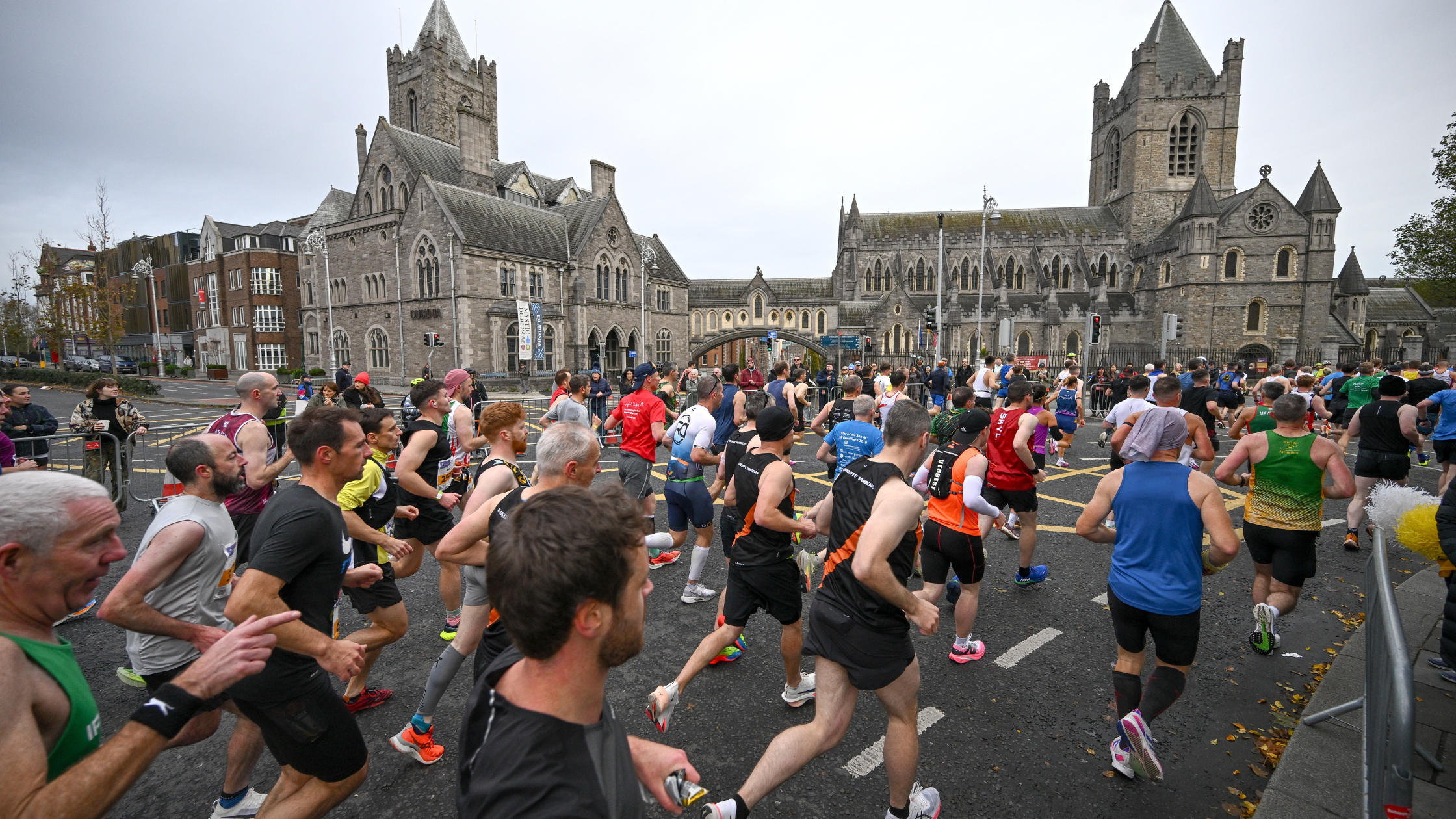Running in hot and humid conditions requires different strategies. Find out how best to handle running when the thermometer rises.
Arguably, the warmer months are the best time of year for the runner, with usually much better conditions to run in. But hot and humid conditions can be tough on the body, often making runs too hot to handle. Whether racing or training, it's vital that you are prepared for handling the heat so that it doesn't hinder your performance.
Sweating is the body's way of coping with body heat. Essentially the more we run, the more we heat up, and therefore, the more we sweat. Sweating is an adaptive process, meaning that the fitter you get the better the body becomes at sweating to cope with the heat.
Handling the heat while running
The body learns to use sweat as a cooling mechanism through practice, or having been put in a position where the body needs to sweat. Thus, the beginner runner or unfit person does not sweat very readily, which can on a hot day put them more at risk of overheating. In extreme conditions the body can sweat so much that it uses up available fluids. No fluids means no sweat, and therefore no means of heat control. This can cause the body's core temperature to rise quickly and can lead to heat exhaustion or worse, heat stroke.
The beginner runner or unfit person does not sweat very readily, which can on a hot day put them more at risk of overheating.
The classic sign of someone with heat stroke is that they actually stop sweating. If this is the case, then the affected person should get out of the sun, cool the body temperature with a cold bath or shower and take on some fluids. Often a person with heat stroke will feel ill and have no thirst. In effect the body is starting to shut down, and it is not uncommon for that person to pass out. In the event of this occurring, medical attention should be sought because the body's core temperature must be regained.
Staying hydrated on a run
The key to staying hydrated is to take on fluids during a run. Perspiration is the means by which the body regulates its temperature during exercise, but it also the main means by which fluid is lost. This dehydration is often the very reason why people underperform both in training and racing.
The average person loses around 500 to 750ml (approx. 17 to 25 fl oz) per hour to sweat while running. In extreme conditions, this can increase to more than double.
In hot weather, the body sweats more, which means greater fluid loss. The average person loses around 500 to 750ml (approx. 17 to 25 fl oz) per hour to sweat while running. In extreme conditions, this can increase to more than double. It is not always possible to put this fluid back into the body, as during a run, stress on the gut means that the majority of people can't absorb more than 500ml (17 fl oz) per hour. We can conclude from this that on a hot day, you are always going to be losing fluid in net terms.
Sports scientists measure the effects of fluid loss via weight loss during exercise. A litre (approx. 34 fl oz) of fluid loss through sweat amounts to a kilogram (35.3oz) in weight. Scientists suggest that a three per cent loss in bodyweight through sweat can result in a substantial loss of performance.
Example of the impact of fluid loss:
A four-hour marathoner might lose 4.5l (1.2gal) of fluid during a race in the heat; despite drinking at all aid stations, he only absorbs around 2l (0.5gal) during this time. This results in a shortfall of 2.5l (0.7gal), which in an 80kg (12st 8lb) male is a three per cent loss in bodyweight.
This applies equally in training, but can be avoided by making sure your hydration levels are well topped up between runs. The best time to re-hydrate after a run is within the 20-minute window immediately after your session, as fluid and fuel is absorbed approximately 30 per cent more effectively in that time window. The advice therefore is always eat and drink straight after a run in order to properly start your recovery . Studies have shown that the body absorbs water better when mixed with small amounts of carbohydrates, so try to make some of your fluid an energy drink.
Running in humid or sunny conditions
Because sweating is the body's way of controlling heat build-up, running in humid conditions, when you sweat more, puts runners at greater risk of dehydration. Even in moderate temperatures high humidity can be a problem because studies show that sweat rates are not substantially different once temperatures move above 20°C (68°F). So, runners in heavily humid conditions face almost as many problems in 25°C (77°F) heat as they do in 35°C (95°F).
In addition to concerns about heat and humidity, runners should be aware of the potential impact of the sun. Eye damage, sunburn and skin cancer are all risks to the runner. Skin cancer, of course, is an issue most people are aware of, but bright UV rays and sun reflection can also cause permanent eye damage.
Strategies for summer runners
The summer months should be the ones we look forward to the most, and by taking a few basic precautions, you should be able to to enjoy summer running safely …
- Run in the morning. By avoiding the middle of the day you're avoiding the worst of the sun’s rays.
- Regardless of when you run in summer, avoid eye damage by wearing sunglasses and a cap, and if you have fair skin cover up with a thin, light coloured shirt.
- Wear waterproof or sweatproof sun blocks with high SPF ratings. Don't lather it on too thickly because there is evidence that sunscreens can block pores, which could lead to overheating.
Clearly hot and humid conditions do not mean we have to curb our running activity. The body can be trained to cope with extreme conditions. How else would New Zealand’s Max Telford have been able to become in the 1970s the first man to run the 124.3 miles (200km) length of Death Valley, where the heat hovers at 50°C (122°F)? With a few simple precautions the weather should never be a reason not to go out for a run.














